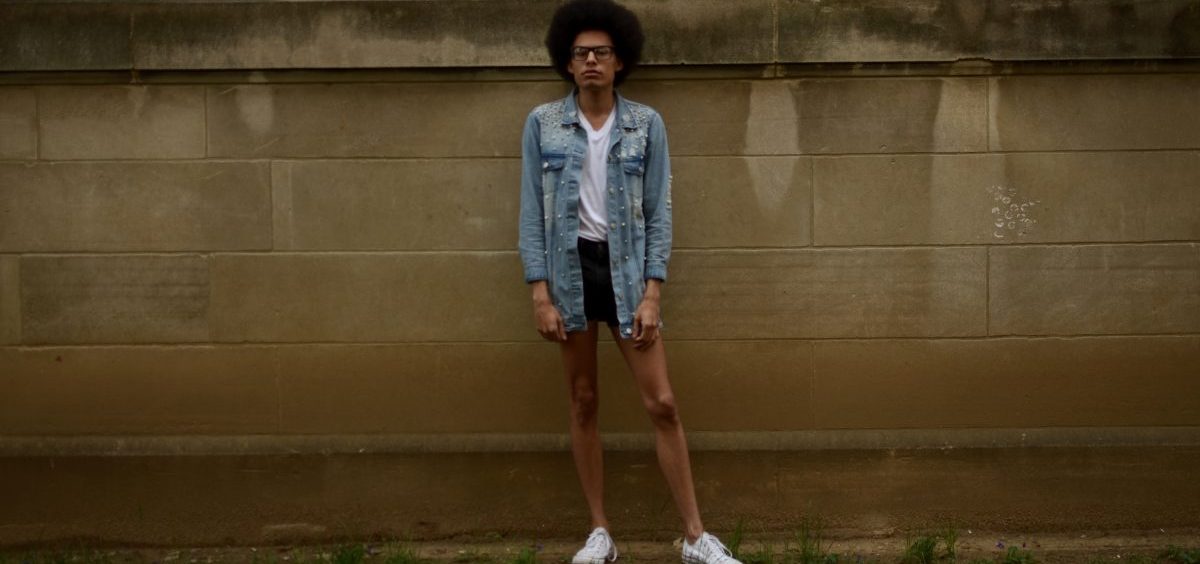
Queer Fashion
By: Delaney Murray, Juli Holbert
Posted on:
Fashion has historically been a means for folks to facilitate and express cultural elements through identification and unification. Queer fashion specifically has helped LGBTQ+ individuals recognize, meet and connect with other members of the community. The OUtlet’s Delaney Murray and Juli Holbert explore and define queer fashion through the decades.
“Queer fashion” has always existed, just as queer people have always existed. For the last 50-plus years, clothing and accessory styles have been used to display and communicate a person’s sexual orientation to other queer people.
Jayse Rednour, a sophomore and part-time model at Ohio University, says that his fashion choices leave no questions to people wondering about his identity.
“I wear shorts that are a lot shorter than most straight men,” Rednour said. “[Straight men] wear shorts that go to their knees and I wear shorts that are a lot higher than that, so I guess that would probably be a signifer because my shorts are at a more feminine length, so then automatically, people are going to assume that I’m gay because I have more feminine qualities.”
Historically, queer fashion has served as a way for people to send messages to other members in the community. Bandanas and single earrings were meant to show sexual preferences – depending on the side of the body they were worn, and the color – and safety pins on jackets were often code for gay men who preferred safe sex. At the same time, queer women started picking up on menswear-heavy dress, and often sported pins and t-shirts from the wide-spread feminist movements at the time.
Singers like George Michael, Elton John, Prince and David Bowie all inspired many queer people, particularly men, to push gender boundaries, and Ellen DeGeneres’s menswear choices were very popular for other lesbians in the 1990’s and 2000’s – as well as actresses like Liv Tyler and Meg Ryan.
But while today’s “queer fashion” is still distinct, it is also slowly becoming more mainstream. Queer people may find it harder to identify other queer people by just their clothing choices alone. Rednour has particularly noticed a blurring of “queer” fashion and behavior through his interactions with OU’s DIY scene, which focuses on unique personal expression.
“The DIY boy, the stereotype, I cannot tell if they are gay or if they are straight,” Rednour said. “A lot of them are comfortable with painting their nails, and kissing boys, and talking about sex and sexuality and some of them are effeminate. And then you ask, ‘Oh, is so and so straight or are they gay?’ and, ‘No, they’re straight.’ So it does break the gaydar because a lot of the DIY boys seem as if they would be gay, but they’re not, they’re actually straight, because they’ve borrowed from gay culture.
Cultural appropriation is defined by mainstream society borrowing elements of an underrepresented or marginalized group. delfin bautista, director of the LGBT Center at Ohio University, believes “queer appropriation” poses risks for members of the queer community.
“With non-queer folks starting to use queer fashion, and that blurring that is not always safe,” bautista said. “Whether we’re looking for just socialization or something more, we have to question ourselves like, ‘Oh, maybe they’re not.’ It’s that interaction with that person but also with folks around that. There’s safety concerns with that. My hunch is that others aren’t thinking of that either. They’re just thinking, ‘Oh, look, this is trendy.’”
As a black student, Rednour is acutely aware of cultural appropriation. He doesn’t believe queer culture is being compromised at the same level that black culture is.
“I don’t think it’s necessarily a big issue and I wouldn’t want to deny someone from expressing themselves,” Rednour said. “If that’s how they want to express themselves and behave, especially because being a marginalized person I know what it feels like to be denied expressing yourself, so I wouldn’t want to do that to someone else. Because in this situation I don’t feel a blatant disrespect as I would if it was something racially based. That’s not to say that sexuality is less than race, I guess I don’t have anything that is inherently a ‘gay thing.’”
But what queer fashion is really about, in bautista’s eyes, is challenging stereotypes and power structures.
“What I’ve appreciated folks also trying to do is challenging some of these notions that my queerness isn’t defined by what I’m wearing,” bautista said. “The fact that I’m wearing t-shirts and jeans doesn’t make me any less queer than a person who is more androgynous or high fashion type of thing. And my wearing a t-shirt and jeans as a university administrator is a way of challenging and queering what it means to be a professional. And so there is the style of clothing but also the way we use the clothing.”
•
View the supplemental video element to this story below.

